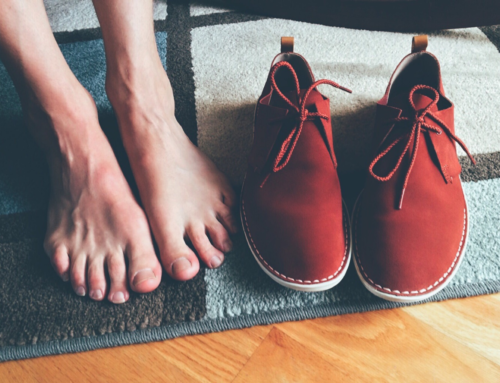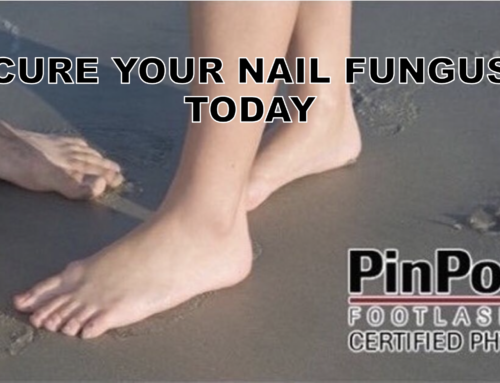Softening toenails is imperative for regular grooming and maintaining nails that have become hard or thick. The most common condition is a toenail fungus infection. Toenail fungus can infect nails easily from many different sources. This happens since fungal spores easily transfer from nails to floors and other surfaces. Fungus likes to live in communal or public areas where people walk barefoot. These places include nail salons, public locker rooms, and public pools. These public places have high volumes of people walking barefoot, with more chances of fungus lingering on the floors. Nail technicians at nail salons may not properly sanitize their tools between clients. Once a fungal infection starts, it will continue to grow. Eventually causing damage to the nail itself. The damage to the toenail is usually aesthetic, but some of the problems caused by the condition are more serious.
Toenail fungus effects on nails
Softening toenails with fungus is necessary because of the damage that toenails fungus causes. Usually, toenail fungus causes discoloration and changes in the texture and composition of the nail itself. Thickening, cracking, brittleness, and other textural issues are common, and discoloration can range both in color and severity. Discoloration of the nail usually starts as a small dot or stripe but can eventually cover the entire nail. The color can range from white to brown to black, and may appear like the nail is bruised or “dead.”
Softening toenails can be helpful when the toenail fungus causes changes in texture that can have functional issues. Once the nail becomes excessively brittle, hard, or thickened, regular grooming can become difficult to even impossible. Particularly, trimming the nails can become very difficult. If the nail has become very thick because of a fungal infection, this can have functional consequences for trimming the nails as well. Toenail clippers aren’t usually designed to cut through excessively hard materials since healthy nails are soft and easy to clip through. Their openings are also usually relatively slim since healthy nails are thin and don’t have multiple layers.
Easy ways to soften fungal nails
Softening toenails is a very helpful and sometimes necessary practice to upkeep the health of toenails with fungus. Trimming the nails is necessary to keep them both clean and healthy. Cutting your nails is an important part of regular hygiene practices recommended by podiatrists and other medical professionals. When nails grow to excessive lengths, they can harbor bacteria and dirt, and maybe more difficult to clean. Excessively long toenails are also likely uncomfortable.
Toenail fungus has an association with uncleanliness because of how it makes the nails look aesthetically. Maintaining a normal nail length will help minimize the dirty aesthetic that toenail fungus can cause since it will be more apparent that you keep your nails maintained. Having excessively long nails also puts you at a bigger risk of damage to your nails and toenails, since the longer nails are more likely to break and have ragged edges. When that happens, ingrown toenails and cuts are more likely to occur.
At home method
Softening toenails is actually quite simple to do at home. Just by strategically using water to soften the nails, you can be able to trim your nails and avoid excessively long toenails! To do this, you only need to soak your nails and feet in a bath of warm water regularly. This allows water to soak into the nail itself, which moisturizes it and makes it less difficult to cut. These soaks can be done with just plain water, or you can also add Epsom salts to them to make them more effective. Soak your feet for about 30 minutes, and then dry off your nails and examine them. They should have become softer; if they have, you can try cutting them and seeing if you are able to.
Softening toenails can sometimes require a couple of consecutive soaks to see a noticeable improvement. If your nail is very hard, you may need to soak it over the course of multiple days to be able to trim them. Repeat the soak until you are able to cut them. If your nails still can’t be trimmed, you likely won’t be able to cut them until you have eliminated the fungal infection itself from under your nails.
Softening toenails at home won’t work for everybody. For example, nails that are particularly thick that won’t fit into the nail clippers probably won’t be able to be trimmed after they are soaked in water. A podiatrist will need to debride the nails for them to be able to be trimmed; this procedure is usually done in combination with an effective treatment for the fungus itself.
A permanent solution to your problem
The only way to completely and permanently soften nails back to how they are when they are healthy, you will need to actually treat the fungal infection itself. After you have successfully eliminated the fungus, a new healthy nail should start to grow that is soft and easy to cut. The best option for this treatment is the PinPointe laser, which typically requires only one treatment to eliminate the fungus from the nail bed. We have over 150 podiatry clinics across the country that perform the PinPointe laser treatment, including multiple locations in New York City. To find which of our 150 podiatry clinics is closest to you to get the PinPointe laser treatment, visit our page here.




